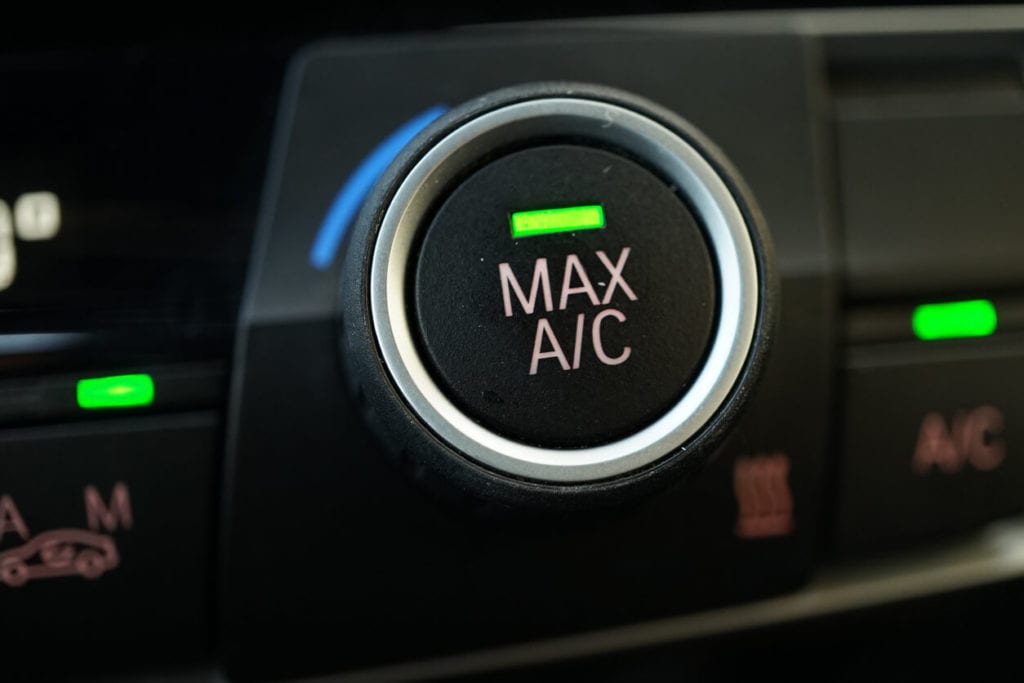 Your car’s air conditioning is the key to surviving summer’s hottest months when you’re on the road. Every time you start your car and turn on the AC, you expect it to work and start blowing cool air as you drive. What happens when it doesn’t? It’s likely your air conditioner needs a recharge. Recharging your air conditioner is the same thing as adding refrigerant to your AC system to help the system blow cool air. Here’s what you should know about the recharging process and how often to charge your car’s AC.
Your car’s air conditioning is the key to surviving summer’s hottest months when you’re on the road. Every time you start your car and turn on the AC, you expect it to work and start blowing cool air as you drive. What happens when it doesn’t? It’s likely your air conditioner needs a recharge. Recharging your air conditioner is the same thing as adding refrigerant to your AC system to help the system blow cool air. Here’s what you should know about the recharging process and how often to charge your car’s AC.
The Recharge Process
When you bring your vehicle to a repair center for an AC recharge, the technician will begin using a special machine to test the pressures and temperatures. If the air conditioning system is low, the technician will immediately begin searching for leaks. However, if the system pressures are really low, the refrigerant level is either very low or completely empty. In this case, refrigerant and leak dye will need to be added in order to aid the technician in locating the leak. Once the leak is identified, which can be a difficult process, the system will need to be evacuated and repaired before refrigerant is placed back into the system. A full AC recharge consists of the evacuation of air and old refrigerant and refilling the system with fresh, pure refrigerant.
When air conditioning repairs are performed and the system has been opened up, additional actions are required before completing the recharge. The system requires a vacuum of all air and moisture before the charge can begin. This process can take a considerable amount of time, yet the outcome results in a fully functioning and cooler air conditioning system.
Locating AC Leaks
Once refrigerant exits the system, it turns into a colorless and odorless gas, making locating a refrigerant leak in the air conditioning system very difficult. Technicians will check for leaks with a special electronic leak detector. If the technician is unable to find it using the leak detector, a special dye will be added into the air conditioning system in hopes of locating the leak or leaks. The dye is undetectable under normal circumstances but with the use of a blacklight and a special pair of spectacles, it glows brilliantly which gives the technician an indication of where the leak may be so it can be repaired.
You Might Need an AC Recharge If:
- You notice the air blowing is not cold or not as cold as it used to be.
- AC Clutch fails to engage. The clutch is controlled by the AC pressure switch, which determines the level of pressure within the system. When the level drops down below a certain level, it fails to engage, making it unable to circulate even the tiniest amount of refrigerant. Refrigerant is essential in the operation of your air conditioner. Refrigerant creates the proper pressures and carries oils that are used to lubricate internal components of the system, protecting elements and preventing overheating
- You spot greasy residue from air conditioning connections or mechanisms and noticeable fluids on the ground. The fluid will continue to leak out until the system is no longer able to function properly.
Since air conditioning systems can develop leaks at any time, there’s no specific time or mileage for an evacuation and recharge to be performed on your system. However, you shouldn’t wait until your vehicle begins showing signs of AC troubles. Have your vehicle’s air conditioning system inspected every Spring to ensure everything is functioning well before the heatwave rolls in.
Seek Professional Help
Performing your own recharge without the proper equipment is highly discouraged. Because of the risks of damage to the environment, a technician is required by Federal law to find and repair leaks as opposed to simply adding refrigerant. Because it is nearly impossible to determine how much refrigerant is already in your system, performing your own recharge with a can of refrigerant at home is a bad idea. Using DIY recharging kits may do more harm than good. Modern AC systems are designed to operate within a minimum amount of refrigerant and DIY kits make adding too much refrigerant all too easy. Adding too much refrigerant can severely damage your system. Additionally, recharging kits often contain substances that are designed to seal any leaks, which may sound appealing, but these sealants can also clog and destroy vital air conditioning components. Most certified shops won’t service a system that has had a sealant added, because they contain substances that can permanently damage a shop’s costly refrigerant recycling machine.
Why risk doing a recharge on your vehicle when you can take it to Sun Auto Service for a professional evacuation and recharge from an ASE Certified Air Conditioning Technician? Our service centers have the knowledge and equipment to provide air conditioning service on virtually any vehicle. We now provide evacuation and recharges on the new 1234yf systems as well as 134a systems. When your air conditioning goes from cool and comfortable to warm and upsetting, bring your vehicle to Sun Auto Service. We can help you survive your summer by restoring your air conditioning so that it is performing optimally. Call or stop into any Sun Auto Service today!
